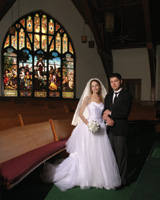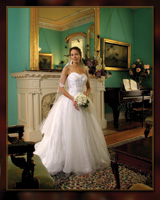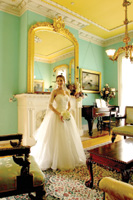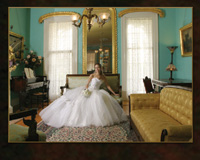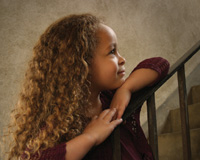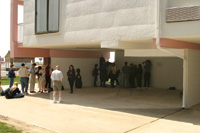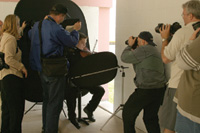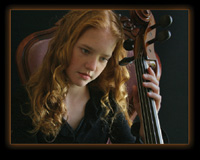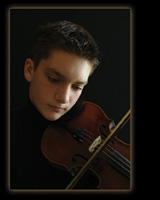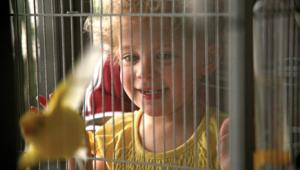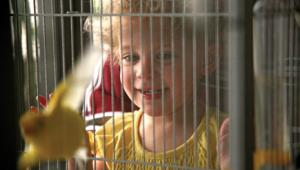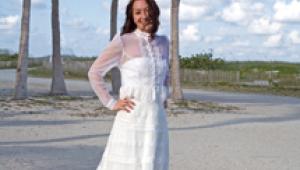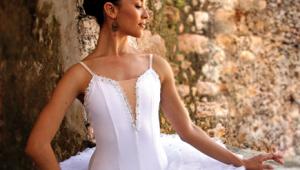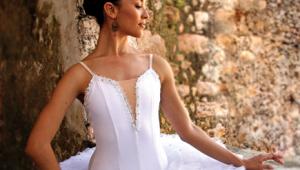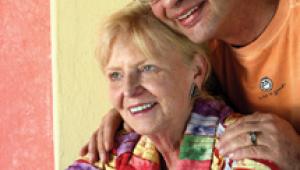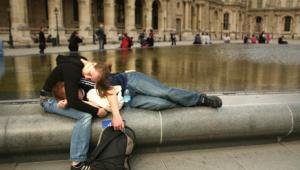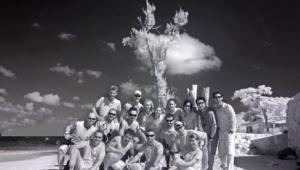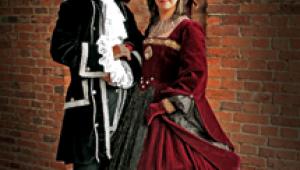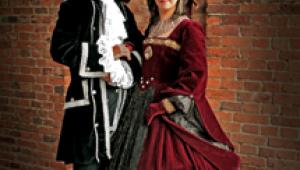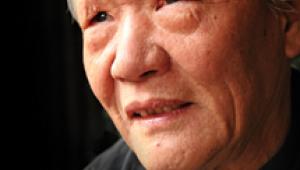Master Class
Want To Turn Pro
How many times have I heard
people tell me that they want to quit their jobs and become professional
photographers? This is always followed by, "How do I know when
I'm ready to quit my full-time job and become a photographer?" |
|||
When I was still a kid wanting to get married and at the same time get into photography full-time, my future mother-in-law took me to see her former boss, Roy Stryker, for advice. I wanted to know what school to go to. How should I begin? Stryker, by the way, was the leading force behind some of this world's greatest images being created during the depression years. Some Good Advice |
|||
I believe in his philosophy
to this day. At the same time, I know that today more and more professionals
are sharing their techniques with others. So, now you really don't
have to wait until you get "stuck" to find out how to make
progress. Through magazine articles like this one and through educational
websites you can learn while you earn...and never really get stuck.
So, with this in mind I'll share some of my pro techniques that
I believe you can use regardless of the subjects you're photographing.
|
|||
The next thing to decide is whether or not the area between the subject and the background is important to the photograph. In the first example of the bride and groom in church, only the stained glass window and the couple were important (Photo 1). Certainly, detail in the pews behind them was not nearly as important as good color saturation in the window. To achieve that with film I would take an exposure meter reading by the window, turning the meter toward the window and seeing what the meter reads. Then, I'd set my exposure for one f/stop less than what the meter calls for--this would help me to get great color saturation in the glass. |
|||
With my digital camera I just
zoomed in to let the window fill the frame, let the camera figure out
the exposure, and then set my camera manually one f/stop below that. I
shot again and loved the results. |
|||
I didn't use a bare-bulb
flash on either of the two flashes, because I didn't want the flashes
to light up any more of the pews than was necessary. The area between
the couple and the window went completely dark, exactly how I intended
the photograph to look. |
|||
To light the bride I took the
reflector off my Quantum flash and used the soft light of the bare bulb
to augment the ambient light on her face and gown. Again, with Quantum's
TTL adapter on top of my 10D I was able to dial-in how I wanted the power
of the flash to relate to the f/stop that I was using. In cases where
the room has subtle indoor ambient light as we had here, I simply dialed
in that I wanted the flash to be one f/stop less and it ended up appearing
as if there had been no extra light added. |
|||
Too many times, I'm afraid,
the whole purpose of a photograph is often lost in an attempt to show
too much in the viewfinder (Photo 4). In this photograph of the interior
of the home, for instance, I had to carefully compose the image with my
17-35mm wide angle lens to include enough of the room to tell the story,
but not so much that it would detract from the bride. |
|||
With the controls we now have
available to us by all the manufacturers currently working in the digital
arena is it any wonder that it's become so easy to balance flash
to ambient light without even needing an exposure meter? Just look at
the picture on the back of the camera and decide if the balance is the
way you like it, or if you want to change it a little. Life is good in
the professional market nowadays! Give Your Portraits
A Pro Look Is The Pro Life For
You? |
- Log in or register to post comments
